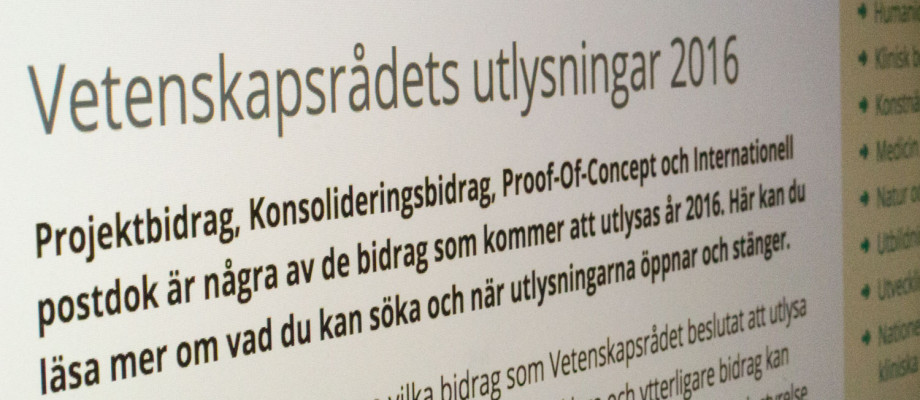RESEARCH FINANCING The newly formed organization, The National Junior Faculty, has already affected the system for research financing in Sweden. The Swedish Research Council is now adding a mid-level to the research financing system that bridges the gap between junior and senior researchers, in response to views from the National Association.
The National Junior Faculty is a national umbrella organization for junior researchers, formed as recently as February, and based on a looser network of Future Facultys and similar organizations from six Swedish universities.
After discussions with Mats Ulfendahl, Secretary General of Medicine and Health, the National Junior Faculty sent a letter last spring to the Swedish Research Council (VR). In the letter, the new national organization described a number of measures that would facilitate and improve career opportunities for young researchers. Among other things, the National Junior Faculty stated that they would like to see the creation of a middle step in the financing system, research funding that can be applied for by researchers that are no longer junior, but who are not yet established as senior researchers.

“Because nearly all research financing is via external funds, it is difficult for researchers who have recently concluded their post doc studies to compete with established researchers,” says Helga Lidö, Research Assistant at the Department of Psychiatry and Neurochemistry, and one of Future Faculty’s two chairpersons at Sahlgrenska Academy.
Prior to the Consolidator Grants
The Swedish Research Council is now introducing a third part in the Swedish Research Council’s financing system, following the National Junior Faculty’s request. Like the system that is used by the European Research Council, the Swedish Research Council in now introducing consolidator grants, a six-year grant that can be applied for by researchers seven to twelve years after their doctorate. The grant is to give the most promising younger researchers the opportunity to consolidate their research and expand and diversify their activities. Mats Ulfendahl wrote in his response to the National Junior Faculty that their viewpoints clearly affected the ongoing discussions on future financing strategies of the Swedish Research Council.

“We, of the Future Faculty at Sahlgrenska Academy, are obviously very happy about the decision by VR. We hope it will enable a better transition from junior to senior researcher. There are still some uncertainties concerning next year, but it is clearly a step in the right direction,” says Marie Kalm, Research Assistant at the Department of Pharmacology, and who co-chairs Future Faculty with Helga Lidö.
The National Junior Faculty represents the future of Swedish research. The organization, which was formed as recently as February, is based on a loose network of Future Facultys and similar organizations from six Swedish universities. Besides Sahlgrenska Academy at Gothenburg’s university, associations at the universities of Linköping, Lund, Umeå and Uppsala and the Karolinska Institute also participate, and are a collective voice of more than a thousand young researchers. The idea behind National Junior Faculty is to create a unified national voice, that provides greater opportunities to affect policy makers and financiers.
Find out more about VR’s calls for proposals 2016 at: http://www.vr.se/nyheterpress/nyheter2015/vetenskapsradetsutlysningar2016.5.1a287903150cecdfecc7fdf3.html
You can read the National Junior Faculty’s letter to the Swedish Research Council at:
https://internwebben.ki.se/sites/default/files/njf_letter_to_vr-mh.pdf
Membership
Would you like to become a member of Future Faculty at Sahlgrenska Academy? You can register by emailing your name, position and institutional affiliation to facultyfuturefaculty@sahlgrenska.gu.se or via the website http://sahlgrenska.gu.se/english/research/future_faculty.











